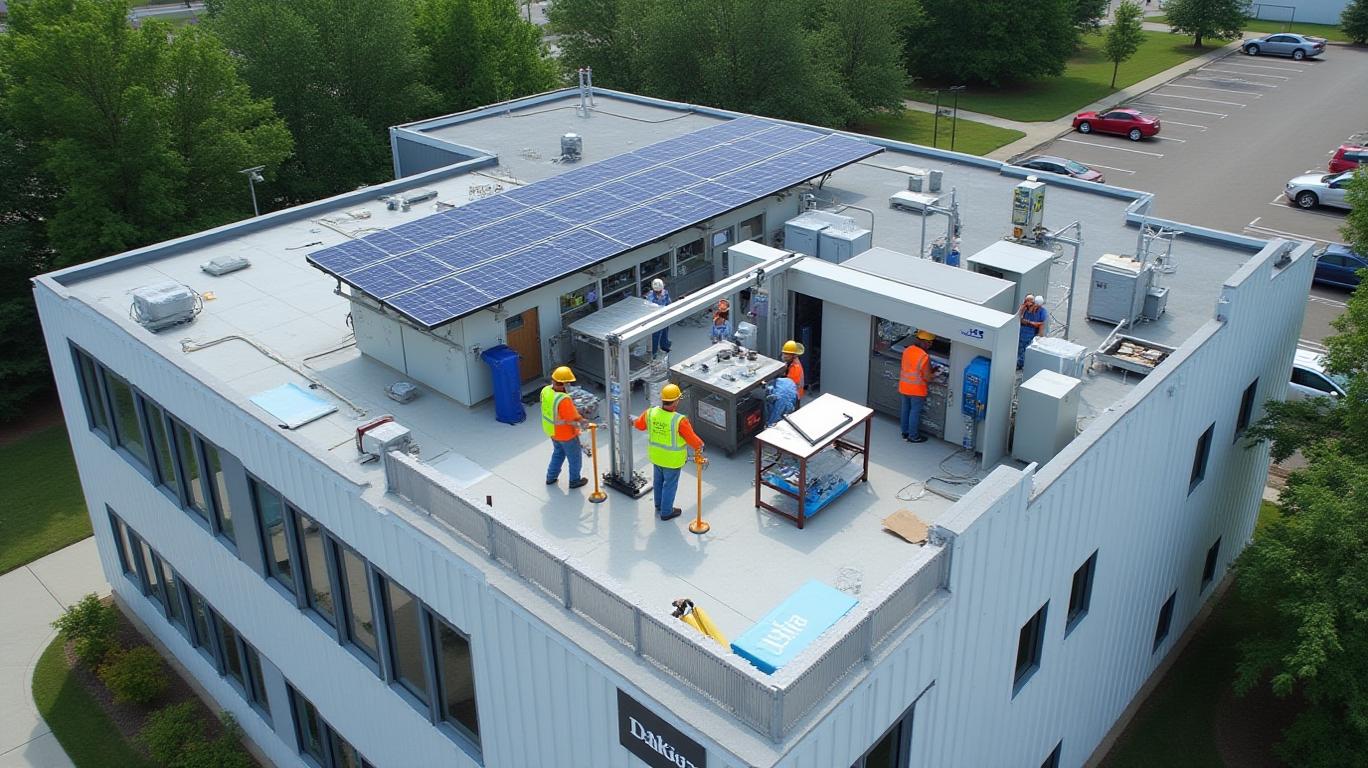Drake State and Leidos Forge a High-Tech Workforce Pipeline: A Catalyst for Alabama's Economic Growth
The ribbon-cutting ceremony for the Leidos Advanced Training Complex at Drake State Community and Technical College in 2025 marked a pivotal moment in Alabama’s economic evolution. This $100 million partnership between the community college and defense technology giant Leidos aims to transform the state into a national hub for advanced manufacturing, cybersecurity, and aerospace innovation. By bridging education and industry, the facility is poised to reshape Alabama’s job market, attract high-tech businesses, and generate significant returns for both investors and the local economy.
The Facility: A Blueprint for Workforce Development
The 50,000-square-foot complex, funded by Leidos’ $1.75 million donation and a 2020 statewide bond issue, houses state-of-the-art labs, classrooms, and apprenticeship programs. Specializing in precision machining, additive manufacturing, and mechatronics, the facility trains students for high-wage careers in sectors critical to national defense and emerging technologies. Its design includes glass viewing areas for industry partners, digital information displays, and a storm shelter—a testament to its role as both an educational and community asset.

Economic Impact: Jobs, Tax Revenue, and Talent Pipeline
The partnership’s most immediate benefit is its projected job creation. By 2025, it aims to directly create 1,500 new positions in cybersecurity, data analytics, and advanced manufacturing—roles that align with Leidos’ expanding defense and tech contracts. Indirectly, the initiative could generate an additional 1,200 jobs, totaling 2,700 positions by 2025. These figures are bolstered by $25 million in annual tax revenue for Alabama, driven by corporate and employee taxes.
The economic ripple effects extend further. Drake State’s 500 annual scholarships and training of 2,000 students yearly ensure a steady pipeline of skilled workers, reducing labor shortages and increasing retention of local talent. This combination of education and industry needs positions Alabama as a competitive destination for tech firms seeking to avoid costly recruitment challenges.
Investment Implications: A Model for Regional Growth
The Leidos-Drake State partnership exemplifies a strategic approach to economic development that investors should watch closely. By investing in workforce training, Leidos secures a local talent pool for its own operations while indirectly fostering ecosystems that attract complementary businesses. For Alabama, the complex is a catalyst for diversifying its economy beyond traditional industries like automotive and agriculture.
The project’s alignment with Alabama’s ASPIRE 2030 initiative—a statewide plan to boost workforce readiness—suggests sustained state support. Additionally, the $5 million from the Alabama Department of Economic and Community Affairs for infrastructure upgrades underscores public-private collaboration as a key driver of success.
Conclusion: A Win-Win for Alabama and U.S. Innovation
The Leidos Advanced Training Complex represents a transformative model for aligning education with industry demand. With 2,700 jobs, $25 million in annual tax revenue, and a trained workforce of 2,000 students annually, the initiative is already delivering on its promises. For investors, this bodes well for sectors tied to Alabama’s growth, including defense contractors, tech firms, and real estate in North Alabama.
The data reinforces this optimism. Leidos’ stock, up 22% since 2020, reflects confidence in its federal contracts and strategic partnerships. Meanwhile, Alabama’s tech job growth outpaces national averages, with 14% annual growth in IT roles since 2020 compared to the U.S. average of 7%.
As the facility’s first FAME program cohort graduates and industries like cybersecurity expand, the partnership’s impact will only grow. For Alabama, this is more than an investment in buildings—it’s a down payment on a future where education, innovation, and economic strength are inextricably linked.


_442a2dcc1749832873286.jpeg)
_e68fac6d1749831664430.jpeg)






